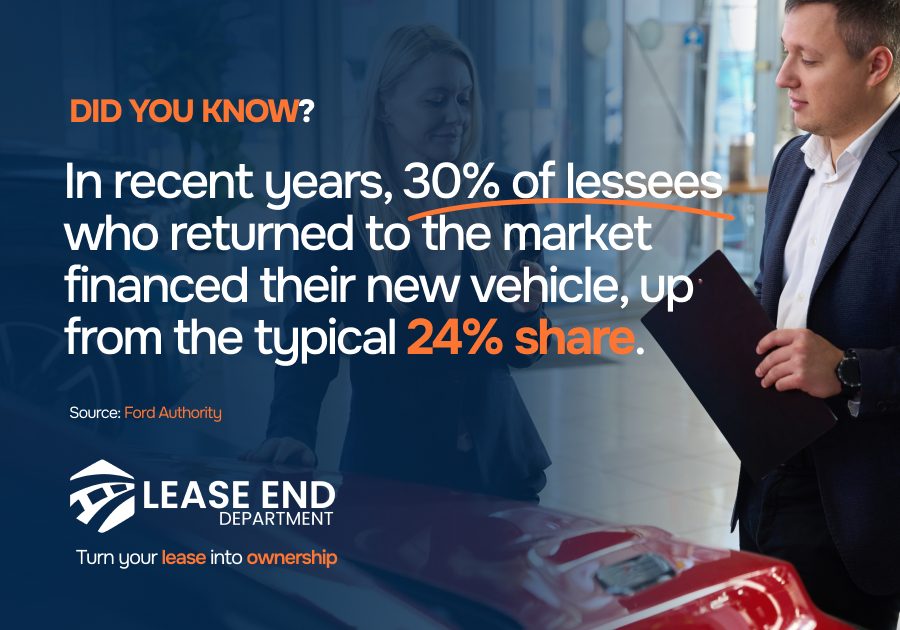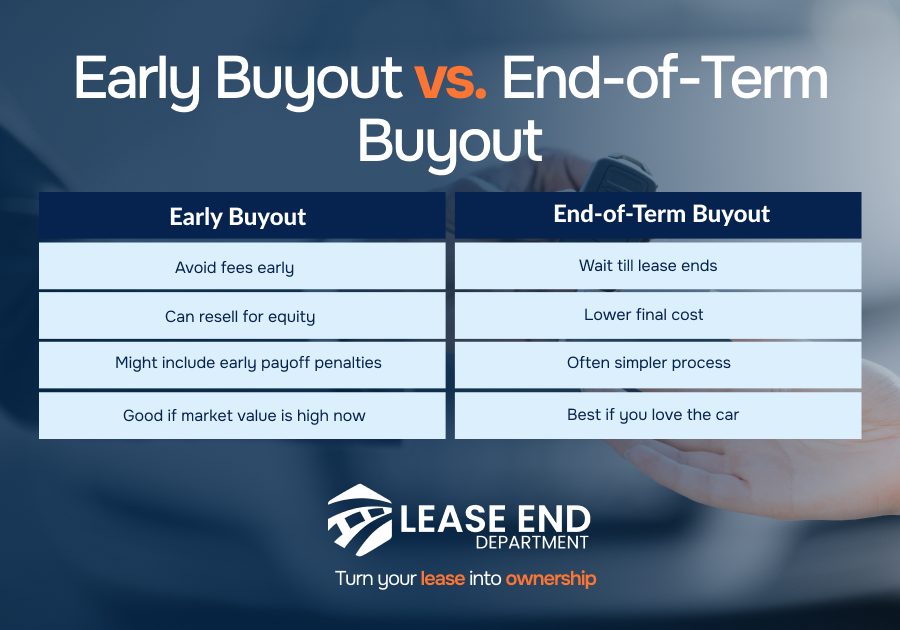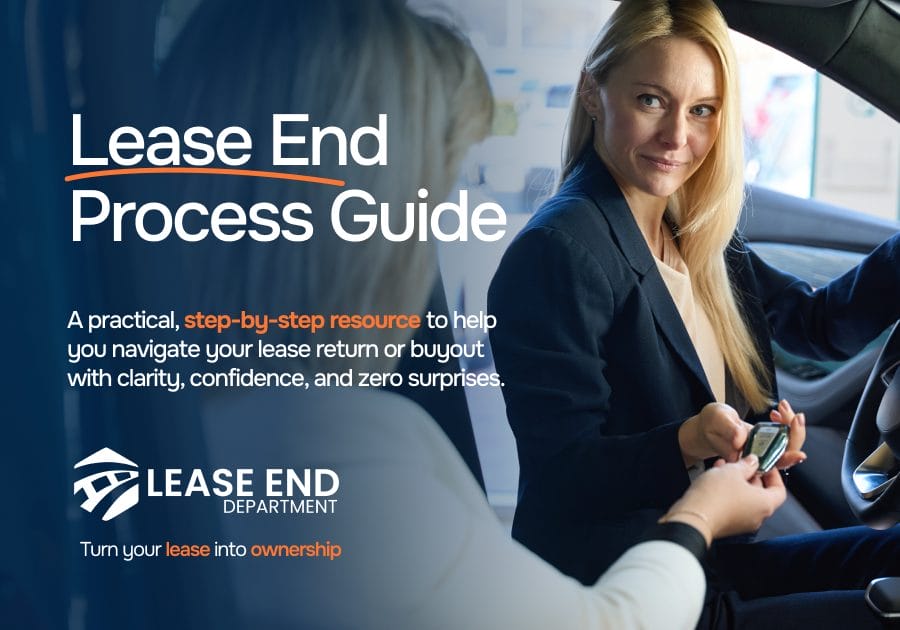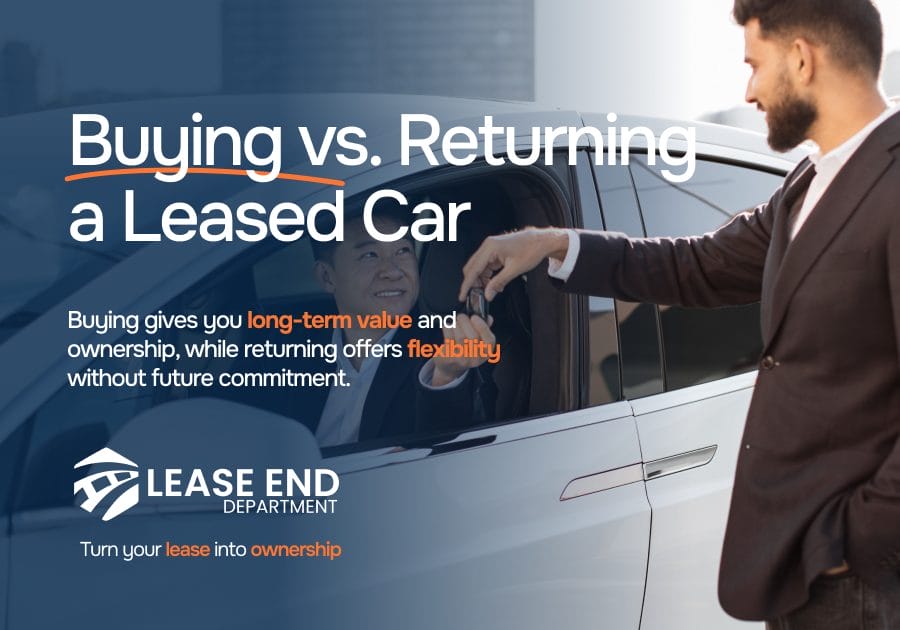Lease Buyout Options: Key Takeaways
- A lease buyout lets you purchase your leased vehicle, either at the end of the lease or earlier if your contract allows
- There are two main types of buyouts: end-of-term and early buyout. End-of-term is common, while early buyouts can help avoid penalties or capture equity
- You may have equity in your car if its market value is higher than your lease buyout amount
- To evaluate your car lease buyout options, compare your payoff quote to the vehicle’s real-time value using tools like Kelley Blue Book or Carvana
- Financing is available for buyouts, and pre-approval helps you avoid dealership markups and hidden fees
- If a lease buyout doesn’t make sense, consider returning the vehicle or transferring your lease instead of breaking it and risking credit damage
Thinking of buying out your leased car?
With new car prices topping $48,000 and used cars averaging over $25,000 and still rising, buying your current vehicle could cost less than starting over with something new.
But here’s the big question: Is a lease buyout the right move for you?
The answer depends on your vehicle’s value, your contract terms, and what you want next.
In this guide, you’ll learn:
- What types of lease buyout options you have
- How an early buyout compares to end-of-term
- When a buyout makes financial sense
- The costs and steps involved in keeping your car
- What to do if a buyout isn’t the best fit
What Are Your Lease Buyout Options?
When your lease is nearing its end or if you’re ready to exit early, you typically have two main types of buyout options, with a third available in select cases.
Each path leads to ownership, but the timing and process vary.
1. End-of-Term Lease Buyou
This is the most common option. You wait until your lease officially ends and then purchase the car at the residual value stated in your contract.
Best if:
- You’ve kept the car in great shape
- You’re under or close to your mileage limit
- The car’s market value is higher than the residual price
Example: If your residual value is $17,000 and similar models are selling for $20,000, buying the car could net you $3,000 in equity.
2. Early Lease Buyou
This allows you to purchase the vehicle before the lease ends. It includes the residual value plus any remaining payments and possibly early termination fees.
Best if:
- You’ve exceeded mileage limits or expect high return fees
- The market value is well above your current payoff
- You want to sell the leased car or refinance it now
Example: Your payoff is $18,000 but the car is worth $21,000. An early buyout could give you $3,000 in equity, even after taxes or fees.
3. Third-Party Lease Buyout
Some leasing companies allow a licensed dealer or online buyer like Carvana or Vroom, to purchase the vehicle directly from the lessor. This skips the step where you buy the car yourself first
Best if:
- Your leasing company permits third-party buyouts (many don’t)
- You want a hassle-free sale without title transfer delays
- You’re looking to avoid upfront taxes or DMV paperwork
Example: If Carvana offers $22,000 and your lease payoff is $18,000, you could pocket the $4,000 difference without ever buying the car yourself.


How Lease-End Buyouts Work
A lease-end buyout lets you purchase your car when your lease term finishes, typically at a price that was set when you first signed the lease.
If the numbers work in your favor, it can be a smart way to move from leasing to ownership.
Step 1: Get Your Lease Payoff Quote
Contact your leasing company and ask for your official payoff amount. This usually includes:
- The residual value (pre-set buyout price)
- Any remaining lease payments (if still owed)
- Applicable taxes and administrative fees
Example: If your residual value is $17,000 and you’re at lease-end, your total buyout may come to around $18,100 after taxes and title fees.
Step 2: Compare Market Value to Your Buyout Price
Before buying, check how much your vehicle is worth on the open market. Use tools like:
- Kelley Blue Book
- Edmunds
- Carvana or Vroom
If your car is worth more than the buyout price, you have equity. That means:
- You could buy the car and resell it for a profit
- You gain a vehicle you already know and trust for below-market value
- You avoid rising prices in today’s tight used-car market
Step 3: Decide How To Pay for the Buyout
Whether you’re paying out of pocket or financing, make sure you understand your options:
- Use cash if you have the funds
- Apply for a lease buyout loan through your credit union, bank, or Lease End Department
- Compare rates to avoid dealer markups
Heads up: Dealerships sometimes include extra fees or push for pricey service add-ons. Always ask for a breakdown before you sign anything.
Step 4: Handle the Title and Registration
Once you’ve paid off the lease, the car becomes yours. You’ll need to:
- Transfer the title into your name
- Register the vehicle with your state DMV
- Pay any state sales tax and tag fees
Lease End Department manages all of this for you, including mailing your new plates, so you can skip the in-person paperwork.
When an Early Lease Buyout Might Make Sense
An early lease buyout means purchasing your car before the lease term officially ends. While not for everyone, this option can work well in certain situations.
Best if:
- You’ve gone over your mileage limit or expect wear-and-tear fees
- The car’s current value is higher than the payoff amount
- You want to sell the vehicle or avoid lease-end obligations
Benefits:
- Avoid return fees and penalties
- Gain equity if market value exceeds your payoff
- End your lease early without damaging your credit
Example: If your buyout is $19,000 and the car is worth $22,000, an early buyout could put $3,000 in your pocket.


Deciding Between Your Lease-End Options
When your lease ends, you’ll need to choose one of three core paths: return the car, buy it out, or lease something new.
Which route makes the most sense depends on how you drive, what your budget looks like, and whether you’re itching for something new or happy with what you’ve got.
Option 1: Return the Car
You give the car back to the leasing company and walk away. This is the default path if you don’t take action.
Best if:
- You want a new vehicle
- You’re under mileage and have avoided wear and tear
- You’re not interested in long-term ownership
Costs to consider:
- Disposition fee (typically $300 to $500)
- Excess mileage or wear-and-tear charges
- Any outstanding lease payments
Option 2: Lease a New Vehicle
Many drivers choose to start fresh with a new lease. Automakers often offer loyalty bonuses or fee waivers to keep you in the brand.
Best if:
- You like upgrading every few years
- You prefer newer technology or better fuel efficiency
- You want to maintain predictable monthly payments
What to ask about:
- Loyalty incentives or early return programs
- Dealer markups on the new lease
- Updated lease terms based on your driving needs
Option 3: Buy Out the Lease
You pay the buyout price and keep the car. This option can lead to long-term savings if your car is in good condition and the market value is higher than the residual.
Best if:
- You love the car and want to avoid shopping for a new one
- You’ve exceeded your mileage limit or caused wear that might trigger fees
- You’ve maintained the car well and it still suits your needs
Pro tip: Before committing to a buyout, check the car’s resale value using Kelley Blue Book or Carvana. If it’s worth more than your payoff, you’re sitting on equity.
Key Questions To Help You Choose
- Does the car still meet your needs?
- Is the market value higher than your buyout amount?
- Do you want a long-term vehicle or short-term flexibility?
- Can you afford the costs involved with buying or leasing again?
How Lease End Department Helps You Move From Lease to Ownership
Not sure what to do when your lease ends?
Lease End Department helps drivers take control of their lease-end decision with clarity, confidence, and zero dealership pressure.
Here’s how our process works:
- Personalized lease-end guidance: Just share your vehicle and lease details. We’ll help you compare return, renewal, and buyout options based on your goals and budget
- Pre-approved buyout financing: Need a loan to complete your buyout? We offer pre-approval tools and competitive loan rates tailored to your credit profile
- 100% online, no dealership visits: From title transfer to plate delivery, we handle all the paperwork so you don’t have to step foot in a showroom or DMV
Why Lease End Department? Because we make lease buyouts easy, transparent, and stress-free, exactly the way it should be
Lease Buyout Options: FAQs
What is a lease purchase option?
A lease purchase option is the clause in your contract that allows you to buy your car at a predetermined price called the residual value when the lease ends. This gives you the right, but not the obligation, to purchase the car.
Can I choose a lease to buy option on a car from the start?
Yes. Some leasing programs are designed as lease-to-buy options, especially if you already know you might want to keep the vehicle. These leases often include more flexible buyout terms or lower residual values to make the transition to ownership easier.
What are the best lease end options if I like the car?
If you’re happy with the car, a lease buyout is often your best lease end option. It lets you avoid return fees, keep a vehicle you trust, and potentially save money compared to buying new.
Is a car lease buyout option always available?
Most leases include a buyout option, but not all lenders handle them the same way. Some require dealership involvement or restrict early buyouts. It’s important to check your contract or call your leasing company directly.
When is an early buyout option a smart move?
An early lease buyout can make sense if the vehicle is worth more than your payoff amount, or if you want to avoid excess mileage fees or wear-and-tear penalties. It’s also useful if you plan to sell the car or refinance it under your own terms.
How does a lease with buyout option work compared to traditional leasing?
A lease with a buyout option gives you the flexibility to lease now and buy later. It combines lower monthly payments during the lease with the ability to purchase the car at lease-end, often making it a more budget-friendly path to ownership.




